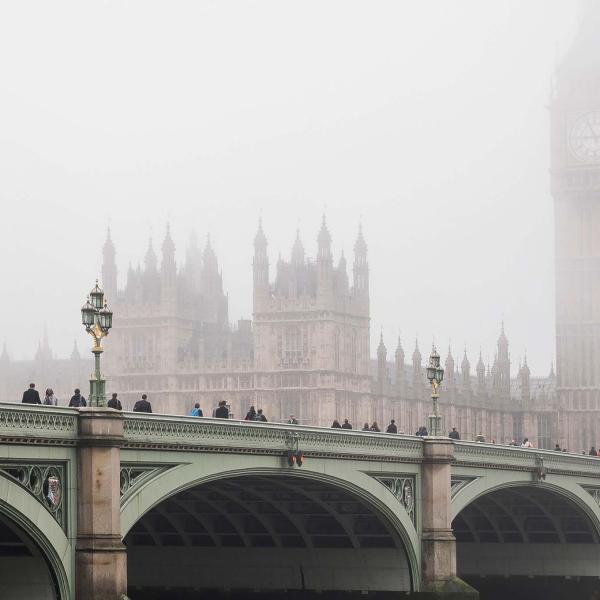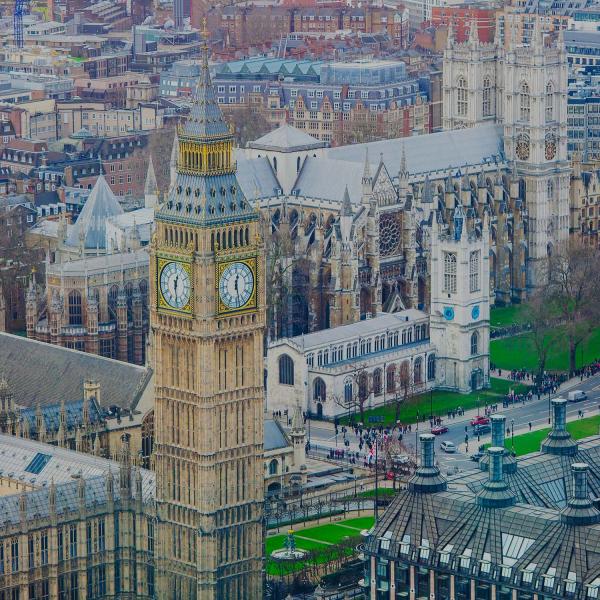If Gordon Brown vacates the Treasury this year, he will leave the public finances stronger than he found them a decade ago, but he will have presided over a smaller improvement than seen in most other industrial countries, according to the Institute for Fiscal Studies' 2007 Green Budget.
Twenty-five years after our first Green Budget was published in 1982, we are delighted that this is the third to be produced in collaboration with Morgan Stanley. We are also grateful to the Economic and Social Research Council for its financial support through the Centre for the Microeconomic Analysis of Public Policy that it funds at IFS.
Taking account of inflation and growth in the economy (Note: Unless otherwise stated, figures are shares of national income, converted to 2006-07 cash terms), Mr Brown is spending £22 billion more this year than Kenneth Clarke did in 1996-97 (mostly on investment), but raising £31 billion more in tax. This leaves him borrowing £9 billion less. Public sector net debt is £80 billion lower than in 1996-97 and the government's annual debt interest bill is £21 billion lower.
But over the past decade most industrial country governments have also reduced their budget deficits and lowered their debt burdens. Indeed, of 22 leading OECD countries, 17 have improved their structural budget balances and 15 have reduced their debt by more than the UK since 1996. After a decade of Mr Brown's stewardship, the UK still has a relatively big structural budget deficit by international standards and remains 'mid-table' when comparing the size of government debt across countries.
Looking forward over the period in which Mr Brown hopes to fight his first general election as Prime Minister, the Chancellor is aiming to cut his borrowing by a further £20 billion over the next five years to stay on course to meet his self-imposed fiscal rules. To that end, he is projecting a further £10 billion increase in the tax burden and has pencilled in a £10 billion cut in public spending.
To bring in most of the extra revenue, the Chancellor is relying on the usual Treasury assumption that he will gradually increase the average rate of income tax by failing to raise allowances and thresholds in line with rising real earnings. These revenue forecasts look realistic and we do not believe that Mr Brown needs to announce additional tax raising measures now to bring in the extra £10 billion he is looking for. But exploiting 'fiscal drag' may not be the most sensible way to raise the extra revenue. We note, for example, that he could choose to raise more money from environmental taxes, although to raise substantial sums from existing green taxes he would have to overcome his reluctance to increase road fuel duty in real terms.
On the spending side, the Chancellor has pencilled in £7 billion of spending cuts over the three years of the forthcoming Comprehensive Spending Review (CSR) - with more assumed to follow. If the Chancellor confirms these plans in the Budget, this will be Labour's toughest spending review yet and (if delivered) would be the tightest squeeze on spending since it stuck to the plans it inherited from the Conservatives in its early years in office - when it was helped by falling unemployment and debt interest costs.
Meanwhile, IFS analysis suggests that meeting the Government's 2010/11 child poverty target alone could cost at least an extra £4½ billion. Even if spending in areas such as defence and environmental protection were frozen in real terms, this could only be found by allocating the NHS less than the minimum recommended by the Wanless Review and/or by cutting education spending as a share of national income.
Mr Brown's most likely strategy may be to focus limited resources on health and education (which would still mean giving them smaller increases in resources than they have enjoyed in recent years), and to put off the tax credit increases necessary to help reduce child poverty to the target until later Budgets and Pre-Budget Reports, in the hope that revenues come in more strongly than expected. But time is short and we note that the Chancellor used unexpected improvements in the public finances to top up previous spending reviews, only to have to retrench when his later forecasts proved overoptimistic.
We argued during most of Labour's second term in office that the Chancellor's fiscal forecasts were too rosy. We thought he would need to announce tax increases and/or spending cuts worth around £13 billion in today's terms to bring about the improvement in the public finances he was looking for and to be able to expect to meet his famous 'golden rule' (to borrow only for investment) with the comfort he desired.
The Chancellor rejected any such suggestion as late as the 2005 general election campaign, but within a couple of months of Labour's victory it was clear that his forecasts were still overoptimistic and that he was on course to break the golden rule over the seven-year economic cycle that the Treasury then expected to run from 1999-2000 to 2005-06 . He promptly added two good years for the public finances to the beginning of the economic cycle, putting himself back on course to meet it. He also implemented the tightening that we and others had earlier said would be necessary, pencilling in the CSR spending cuts and announcing the first of a series of post-election tax increases that together will raise £6 billion by 2007-08.
The Treasury now claims that a 10-year cycle started in 1997-98 and will probably conclude in the current financial year, ending in March. Over this period we expect the golden rule to be met with £7 billion to spare (slightly less than the Treasury) and net debt to remain below the 40% of national income ceiling in the 'sustainable investment rule'. We also think it more likely than not that the golden rule will be met over the next cycle, but we expect net debt to move uncomfortably close to 40% of national income.
The Chancellor's expectation of meeting the golden rule depends crucially on the dating of the economic cycle over which it is judged. Without the extra two years that the Chancellor added to the beginning of the cycle in 2005, Treasury forecasts would now show him breaking the rule by £5½ billion. Using a statistical filter, rather than estimates by the Chancellor's officials, Morgan Stanley modelling would suggest that the current cycle may have started in 2003-04 and run to around 2009-10. Over this period Treasury forecasts imply that the golden rule would be broken by £57 billion; we would expect it to be broken by £66 billion.
By re-dating the economic cycle at a uniquely convenient moment, and delaying tax increases and spending cuts until just after the election, the Chancellor appears to have eroded the credibility of his fiscal rules as a meaningful constraint on his tax and spending decisions. The Financial Times concluded from its New Year survey of City and academic economists earlier this month that: "Almost none use the Chancellor's fiscal rules anymore as an indication of the health of the public finances".
We believe that the likelihood that Mr Brown will declare 'victory' in meeting the golden rule in April, and the expected arrival of a new Chancellor later in the year, creates a golden opportunity to improve the fiscal rules and restore lost credibility. This could legitimately be presented as building on Mr Brown's original vision and applying lessons from the widely-hailed success of his framework for interest rate policy.
We argue that the golden rule should be symmetric, forward-looking and less reliant on the ability to identify economic cycles precisely. The Treasury's forecasting of the public finances should also be made more transparent or perhaps even delegated to an independent body that would not be suspected of massaging the figures.
Other findings in the Green Budget include:
- VAT revenue lost to fraud and evasion jumped by £2.7 billion to £12.4 billion in 2005-06, according to HM Revenue and Customs, of which 'carousel' and other missing trader fraud is thought to account for about a quarter. If the figures are right, and unless there has been an unexplained and significant increase in other types of fraud, HMRC are underestimating the impact of carousel fraud. Carousel fraud is best tackled by ending the zero-rating of exports. (Chapter 9)
- Morgan Stanley is more pessimistic than the Treasury about the prospects for economic growth in the next couple of years, with some fall in house prices also likely in the next few years. It also believes that the estimates of trend growth the Treasury uses to forecast the public finances are a reasonable central estimate rather than cautious as Mr Brown claims. Even so on the Morgan Stanley central forecast the sustainable investment rule and golden rule are on course to be met, at least based upon the Treasury estimates of the dates of the economic cycle. (Chapter 4)
- The current budget balance is likely to be £1-2 billion worse than the Treasury expects this year and next, but about £1½ billion better than the Treasury expects in 2011-12. We expect net debt to move slightly above 40% of national income if the economy evolves along Morgan Stanley's 'pessimistic' scenario, in which growth is weaker and spare capacity in the economy persists. We would not expect it to take much fiscal tightening to keep debt below 40%. (Chapter 5)
- The cost of government borrowing is unlikely to be much affected if the government has to issue a few billion more pounds in gilts than it currently assumes in coming years. The government should issue a greater proportion of its debt in longer-dated conventional and index-linked form; the case for the government to issue longevity bonds is not compelling. (Chapter 6)
- The net tax increases announced by Gordon Brown since 1997 will yield the Treasury £17 billion next year (in 2007-08 terms). Adding 'fiscal drag' and Conservative policy changes that Mr Brown maintained brings the total up to £57 billion, offset by £17 billion lost through developments in the economy. The resulting increase in the tax burden of £40 billion expected between 1996-97 and 2007-08 is equivalent to roughly £1,300 per family. (Chapter 2)
- Measures announced in the Pre-Budget Report will do little to reverse the decline since 1999 in the proportion of national income collected in environmental tax revenues. But green tax revenues remain slightly higher in the UK than in OECD industrial countries on average. (Chapter 11)
- Critics argue that the tax, benefit and tax credit system is inefficient in lifting couples with children out of poverty, that it can penalise parents who live together, and that it gives insufficient support to couples where one partner gives up work to care for young children. The impacts of proposals to address these issues on incomes and work incentives vary significantly, in part reflecting the different motivations of those who propose them. (Chapter 12)
- The Government should consider replacing the UK's complex 'credit' system of corporation tax with the simpler 'exemption' system, perhaps recouping the lost revenue by ending the ability of companies to deduct debt interest from their taxable profits. But the revenue and distributional implications of such a change are uncertain and a matter of lively debate. (Chapter 10)
- National Accounts measures suggest that the output of the public sector health and education sectors has been increasing in recent years, but that productivity has not. But output increases may be desirable even in the absence of productivity improvements. (Chapter 8)
- In recent years the Treasury could be argued to have pursued a rolling target to achieve a current budget surplus of around 0.7% of national income after five years. This target was missed significantly in 2005-06 and is also set to be missed by a diminishing margin in coming years. (Chapter 3)
- Treasury projections suggest that public spending will increase by about £50 billion in today's terms over the next 50 years if current policies remain unchanged. The Treasury's estimates of spending in the early 2050s have risen significantly in the last five years, in part reflecting upwards revisions to estimates of life expectancy by the Government Actuary. (Chapter 7)









